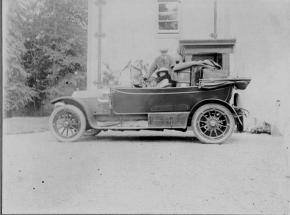History
The lands of Kippendavie, on the east side of Dunblane, have been in the Stirling family since 1595 when they were given by Sir Archibald Stirling of Keir (the neighbouring estate) to his third son, also Archibald. Kippendavie has been in the same family ever since.
The Kippendavie Stirlings, in common with other kindred families in the area, were ardent Jacobite and in 1708 were indicted for treason and locked up in the Tollbooth in Edinburgh. However, with the aid of a clever lawyer and the evidence of a dutiful servant, they were acquitted.
The Kippendavie Stirlings owning land and, at one time many properties in Dunblane, have been closely involved with the development and expansion of the town, especially since the coming of the railway in 1849. By the 1860s, Dunblane had become a “desirable place to live” for early commuters, mainly by train to Glasgow, and many large houses were built up Glen Road, which was itself was laid out as a new route up to Sheriffmuir in the 1840s.
As well as the railway, Kippendavie was involved in many new developments such as the Hydro (1860s), St. Mary’s Church, Stirling Arms (now The Riverside), the Post Office, the Victoria Hall, the Dunblane (New) Golf Club and the “new” road past the Police Station where previously all through traffic had to proceed via the High Street.

